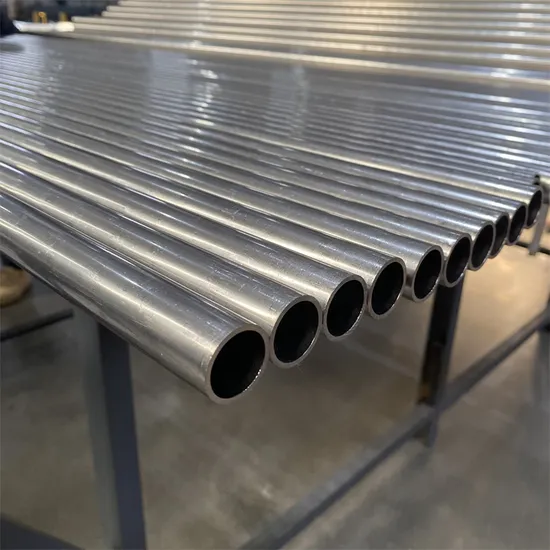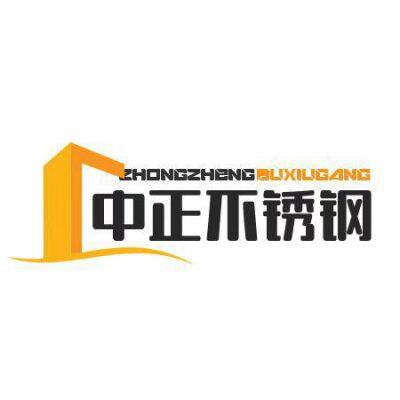Home > Blog > How to choose suitable stainless steel heat exchange tubes or stainless steel fluid tubes?
-
 Laijing Bu
Hi there! Welcome to my shop. Let me know if you have any questions.
Laijing Bu
Hi there! Welcome to my shop. Let me know if you have any questions.
Your message has exceeded the limit.

How to choose suitable stainless steel heat exchange tubes or stainless steel fluid tubes?
2025-07-15 13:29:34
Choosing suitable stainless steel heat exchange tubes or stainless steel fluid tubes requires a comprehensive evaluation from multiple dimensions, such as functional positioning, material properties, structural design, and standard specifications, based on specific operating requirements (such as function, medium, temperature, pressure, etc.). The following is a step-by-step selection guide:
1、 Clarify the core functional requirements (heat exchange tube vs fluid tube)
1. Prioritize the purpose of judgment
If used for heat exchange (such as heat exchangers, condensers): When choosing stainless steel heat exchange tubes, emphasis should be placed on "efficient heat transfer" and "temperature adaptability".
If used for fluid transportation (such as pipeline systems, medium transmission): When choosing stainless steel fluid pipes, emphasis should be placed on "safe transportation" and "fluid resistance control".
2、 Analyze environmental parameters of working conditions
1. Characteristics of the medium
corrosive:
Ordinary corrosive environment (such as water, weak acid): 304 stainless steel (low cost, balanced comprehensive performance) can be selected.
Strong corrosion or chloride ion environment (such as seawater, salt solution): 316L (resistant to chloride ion corrosion) and 2205 duplex steel (higher strength and corrosion resistance) should be selected.
High temperature oxidation environment (such as smoke, steam): 321 (containing Ti, resistant to intergranular corrosion), 310S (resistant to high temperature of 1200 ℃) or nickel based alloys (such as Inconel 625) can be selected.
Cleanliness:
The food and pharmaceutical industries require "sanitary grade pipelines" and choose fluid pipes with polished inner walls (such as 316L, Ra ≤ 0.8 μ m); If the medium of the heat exchange tube is prone to scaling, threaded or corrugated tubes should be selected (to enhance turbulence and reduce scaling).
2. Temperature and pressure
High temperature scenario (>300 ℃):
Heat exchange tube: Priority should be given to materials with high thermal conductivity and good high-temperature strength (such as 304 with better thermal conductivity than 316L, but 321 is more resistant to high-temperature creep).
Fluid pipe: It must meet the durability strength at high temperatures (refer to GB/T 14976 or ASME SA312 for high temperature steel grades).
High pressure scenarios (such as high-pressure boilers, chemical reactors):
Heat exchange tube: Thick walled seamless tube (such as high-pressure heat exchange tube specified in GB/T 24593) is required to ensure resistance to temperature difference stress and pressure resistance.
Fluid tube: Select the wall thickness according to the pressure level (such as Sch40, Sch80) and pass a hydraulic test (usually 1.5 times the working pressure).
3. Flow velocity and flow rate
Heat exchange tubes: Small tube diameters (such as 19mm and 25mm) facilitate dense arrangement and increase heat exchange area; Special structures (fins/threads) increase turbulence and enhance heat transfer (suitable for gases or low velocity liquids).
Fluid tube: Calculate the pipe diameter based on the flow rate (following the economic flow rate: liquid 1-3m/s, gas 10-30m/s), with a smooth inner wall to reduce pressure drop (avoid using structures with fins or threads).
3、 Material grade selection (comparison of core parameters)
As shown in Figure 1
4、 Structural design and specification selection
1. Special design of heat exchange tubes
Enhanced heat transfer structure:
Fin tube: used for gas side heat exchange (increasing surface area, such as air coolers);
Threaded pipe/corrugated pipe: increases fluid disturbance and reduces dirt deposition (suitable for media that are prone to scaling, such as water scale and oil scale);
Thin walled tube (wall thickness ≤ 1mm): Reduce thermal resistance, but ensure pressure resistance (such as sealing during expansion/welding).
Specification range: The outer diameter is usually 10-50mm, and the length is customized according to the size of the heat exchanger (such as 3-12 meters), which needs to be matched with the hole spacing and arrangement of the tube plate (triangular/square arrangement).
2. General design of fluid pipes
Inner wall requirements: Smooth and burr free (Ra ≤ 3.2 μ m), reducing fluid resistance and scaling; Sanitary grade pipelines need to be polished (Ra ≤ 0.8 μ m).
Connection method: Select welding (high pressure), clamps (sanitary grade), and threads (small diameter low pressure) according to pressure and pipe diameter, ensuring sealing (such as expansion welding of heat exchange tubes and tube sheets).
Specification range: Outer diameter 6-1200mm, wall thickness selected according to ASME B36.19 or GB/T 17395 (such as Sch10S-Sh160S).
5、 Follow industry standards and inspection requirements
1. Key standards for heat exchange tubes
Material standards: GB/T 24593 (China Seamless Heat Exchanger Tubes), ASTM A213 (American Standard Boiler and Heat Exchanger Tubes).
Equipment standards: GB/T 151 (Heat Exchanger Design), ASME BPVC Section VIII Div.1 (Pressure Vessels), which must meet the mechanical properties of tube sheet connections (such as expansion pull off force, welding inspection).
Inspection items: hydrostatic test (≥ 1.5 times design pressure), eddy current testing (detecting internal defects), intergranular corrosion test (for sensitized materials).
2. Key standards for fluid pipes
Material standards: GB/T 14976 (Seamless Pipe for Fluid Transport in China), ASTM A312 (American Standard Welded/Seamless Austenitic Pipe), EN 10217-7 (European Standard Corrosion resistant Steel Pipe).
Engineering standards: SH/T 3059 (Petrochemical Pipeline Design), GB 50316 (Industrial Metal Pipeline Specification), which must meet pressure temperature ratings (such as PN16, PN40).
Inspection items: tensile test (strength/elongation), flattening test (toughness), airtightness test (when transporting hazardous media such as gas).
6、 Other key factors
1. Cost and supply cycle
Heat exchange tubes: special structures (fins/threads) and high-end materials (duplex steel/nickel based alloys) have high costs and require pre customization;
Fluid tube: Conventional optical tubes have fast supply, while large-diameter or thick walled tubes may require customization. Pay attention to the negative deviation of wall thickness (which affects pressure rating).
2. Adaptability of processing technology
Heat exchange tubes: Expansion/welding processes need to be considered (such as 316L welding, which requires control of heat input to avoid intergranular corrosion);
Fluid tube: Processing properties such as bending and expansion (e.g. 304 has better ductility than duplex steel and is easier to form).
3. Industry specific requirements
Food and medicine: FDA certification is required, and 316L sanitary grade tubing (inner wall electrolytic polishing) should be selected;
Nuclear power/aerospace: strict cleanliness and non-destructive testing (such as 100% radiographic testing) must be met.
7、 Summary of Decision Process
Clear function: Heat exchange → Select heat exchange tubes (focusing on heat transfer structure); Transport → Select fluid pipe (focusing on pressure and corrosion resistance).
Analyze working conditions: medium (corrosion/cleanliness), temperature/pressure, flow rate/velocity → lock material grade (such as 316L, 2205).
Tags: Clarify the core functional requirements (heat exchange tube vs fluid tube), Follow industry standards and inspection requirements, Analyze environmental parameters of working conditions


